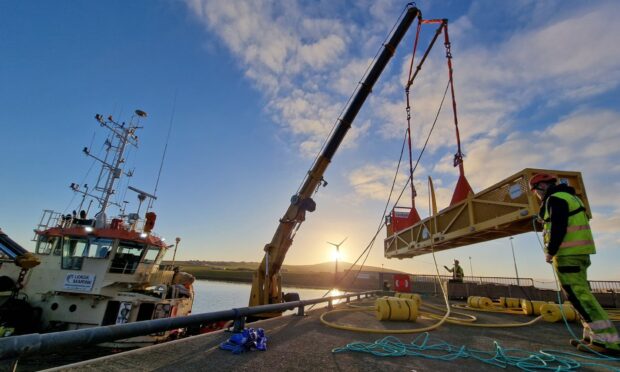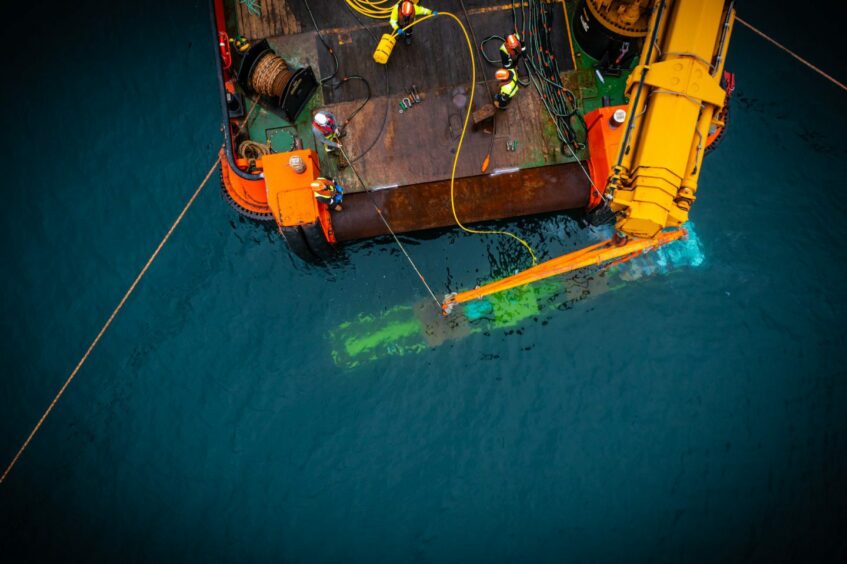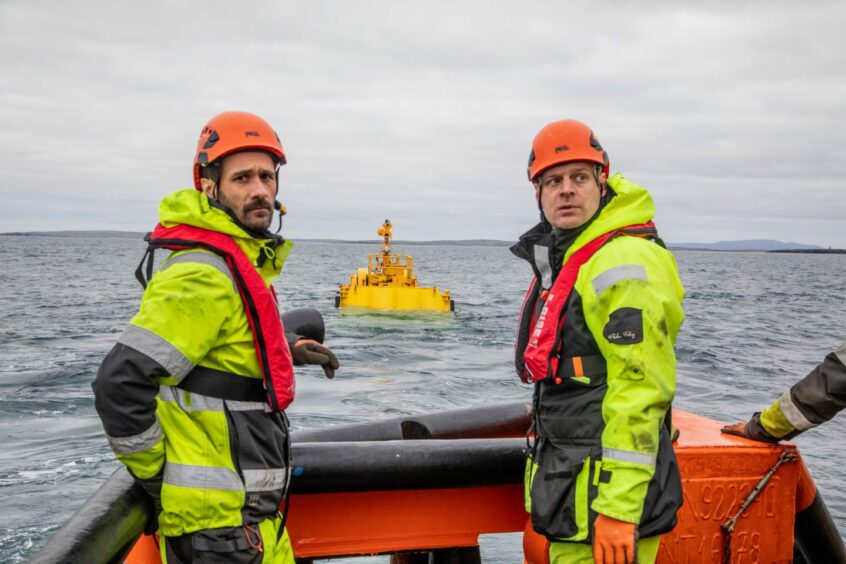A subsea battery developed by an Aberdeen green energy technology company has been hooked up to a £2 million demonstrator project in the seas off Orkney.
The project, dubbed Renewables for Subsea Power (RSP), sees an underwater “Halo” battery developed by Aberdeen subsea tech firm Verlume deployed alongside a “Blue X” wave energy converter built by Edinburgh company Mocean Energy.
The two technologies have been installed in the seas off Orkney and have now begun a four-month test programme where they will provide low carbon power and communication to subsea infrastructure, including Baker Hughes subsea controls equipment and a resident underwater autonomous vehicle provided by Aberdeen and Bergen-based Transmark Subsea.
The aim of the project is to show how clean energy technologies can be combined to provide low-carbon power and communications for subsea equipment.
Solutions such as this could offer a cost-effective alternative to the umbilical cables otherwise used to link offshore platforms and assets, which can be carbon-intensive and slow to install.
The system will remain at sea at a site 3 miles off the Orkney mainland, in a bid to raise the system’s “technology readiness level” – the rating given to a system that has been qualified via test and demonstration.
‘Pinnacle of success’
In 2021, the consortium invested £1.6 million into phase two of the programme – which saw the successful integration of the core technologies in an onshore commissioning test environment at Verlume’s operations facility in Aberdeen.
The company – formerly known as EC-OG – has designed its Halo seabed energy storage system for the harsh underwater environment alongside an intelligent energy management system, Axonn, which autonomously maximises available battery capacity in real time.
The RSP Halo system is the second variant that has been built for commercial wave power integration and the first to be built at Verlume’s 20,000 square foot facility in Dyce, Aberdeen.
Verlume chief commercial officer Andy Martin added: “This offshore test programme is the pinnacle of the success to date in this project, we are very much looking forward to the Halo being deployed. The testing will provide a great opportunity to gather high quality performance and operational data which will support the further electrification of the subsea sector.”
‘Natural next step for our technology’
Mocean Energy – a successful graduate of the NZTC TechX programme – has also tested its Blue X prototype at EMEC’s Scapa Flow test site in 2021, in which it produced first power.
“This is a natural next step for our technology,” said Mocean Energy managing director Cameron McNatt. “The new test site east off Deerness offers a much more vigorous wave climate and the opportunity to demonstrate the integration of a number of technologies in real sea conditions.”
Alex Seinuah, Baker Hughes’ growth hub leader, said the integrated deployment of the technologies was “a historic moment” for all partners involved in the project.
“Baker Hughes looks forward to sharing the outcome of the offshore deployment with its customers, who are looking at field electrification via renewable sources,” he added.
Nigel Money, managing director at Transmark Subsea said the company’s AUV system was currently used in salmon farming nets, but that the open water testing would also help the firm enable a broader demonstration of an off-grid resident AUV.
The European Marine Energy Centre (EMEC) has supplied instrumentation to measure the speed and direction of currents during the deployment, whilst Wave Energy Scotland has provided £160,000 to support the integration of the umbilical into the wave energy converter.
The deployment marks the third phase of the RSP project which is being supported by a consortium of partners, including UK-based Harbour Energy and Serica Energy, as well as grant funding from the Net Zero Technology Centre (NZTC).













Conversation